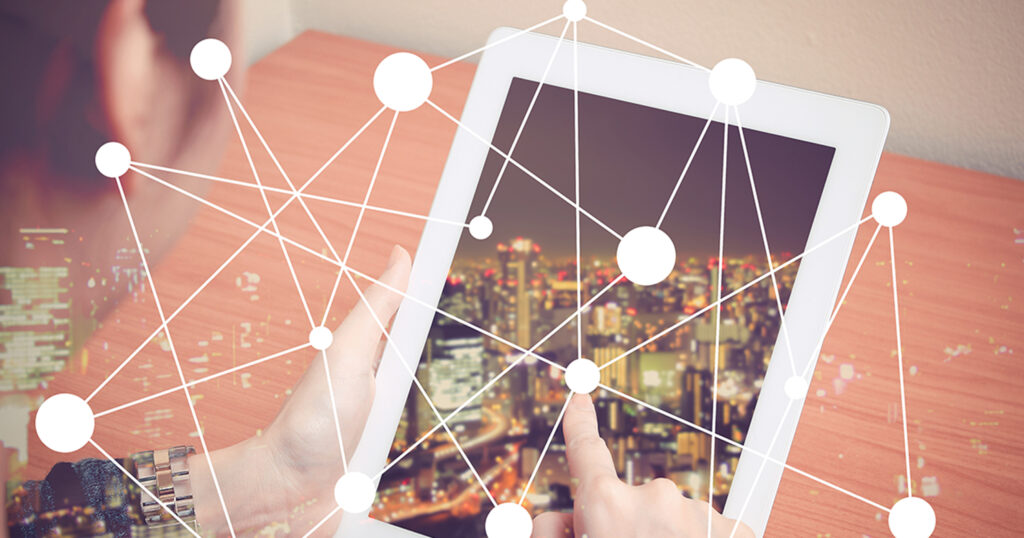Finding it tough to balance digital connections, and navigating relationships in today’s tech-driven world? This article offers practical tips for balancing digital connections, navigating relationships and managing both online and offline interactions, ensuring your relationships stay strong and meaningful.
Key Takeaways
- Digital communication enhances connectivity but requires balance with in-person interactions to maintain meaningful relationships.
- Setting boundaries, prioritizing quality time, and engaging in face-to-face conversations are vital strategies for fostering deeper connections.
- Regular digital detoxes and managing screen time can improve focus and interpersonal relationships, ensuring that digital interactions complement rather than replace real-life connections.
Understanding Digital Connections in the Modern World
In the digital age, our interactions are profoundly shaped by the tools we use. Smartphones, social media platforms, and other digital devices have become integral to our daily lives, offering instant messaging, video calls, and various forms of virtual communication. While these tools enhance our ability to stay connected, they also pose a digital dilemma: balancing digital interactions with real-world connections to maintain meaningful relationships and digital interaction.
Engaging in both online and face-to-face interactions is crucial for building resilient communities and fostering deeper connections. Clear communication strategies and respect for privacy are essential for navigating this digital realm effectively.
The Rise of Digital Communication
The advent of the digital age has revolutionized how we communicate. From the simplicity of phone calls to the complexity of video chats and instant messaging, the methods for staying in touch are more varied than ever. This constant evolution can sometimes feel overwhelming, as we juggle multiple platforms to maintain our relationships.
While digital communication offers convenience, it often leads to fewer in-person conversations, depriving us of the nonverbal cues and body language that enrich our interactions. It’s essential to evaluate how we use technology to ensure it complements, rather than replaces, personal connections.
Benefits of Digital Connectivity
In this increasingly connected world, digital tools offer significant benefits, enabling us to maintain meaningful connections regardless of distance. They provide opportunities for networking and foster deeper connections through virtual spaces designed for meaningful conversations.
However, it’s crucial to balance these digital interactions with real-world connections to avoid superficial relationships.
Challenges of Digital Overload
Despite the advantages, the digital world presents unique challenges. Digital distractions can divert our attention from partners, impacting emotional connections. Constant updates on social media platforms can make it difficult to keep up, creating a sense of digital overload.
Striving for a balance between virtual and physical encounters is essential for maintaining healthy relationships.
Strategies for Balancing Digital and In-Person Interactions
Achieving a healthy balance between digital and in-person interactions requires intentional effort and practical strategies. Setting healthy boundaries, prioritizing quality time, and embracing face-to-face conversations fosters deeper, more meaningful connections in our increasingly digital world.
Setting Healthy Boundaries
Establishing clear limits around technology use is crucial for fostering deeper interpersonal connections. Establishing boundaries in sharing online content and balancing information sharing with privacy are key to relationship health. Designated times for social media engagement can help maintain relationships while ensuring personal boundaries.
Clear boundaries for digital device usage reduce stress and contribute to stronger, more meaningful relationships. These practices are vital for maintaining a healthy balance in our digital interactions.
Prioritizing Quality Time
Focusing on fewer, more meaningful interactions can enhance the quality of relationships in a digital context. Digital tools can facilitate group activities and meetups, strengthening interpersonal connections. Designating specific times for social media use can enhance engagement with real-life interactions.
Engaging in offline hobbies like reading or outdoor activities strengthens social bonds and reduces dependency on digital devices. Group games and community events also foster connections and increase social engagement.
Embracing Face-to-Face Conversations
Personal interactions significantly strengthen emotional connections and understanding among individuals. Engaging in face-to-face interactions, rather than scrolling through social media, enhances personal connections and allows for the transmission of nonverbal signals, which are essential for building trust.
Putting away digital devices during face-to-face meetings enhances interactions.
Enhancing Digital Communication Methods
Enhancing digital communication methods ensures that our online interactions are meaningful and complement our personal connections. Diversifying communication platforms, practising mindful messaging, and using technology to foster trust helps navigate the digital landscape effectively.
Diversifying Communication Platforms
Diversifying communication methods is vital to keep interactions engaging and mimic the depth of in-person relationships. Key platforms enable deeper interactions, while video conference software enhances communication, especially for remote team members.
Regular acknowledgement of messages and ensuring clarity can significantly strengthen digital relationships.
Mindful Messaging
The tone is crucial in digital communication, as it helps prevent misinterpretation. Using emoticons, emojis, and other digital cues can effectively convey tone, ensuring your message is understood.
Giving full attention, listening actively, and responding thoughtfully maintains meaningful connections.
Using Technology to Foster Trust
Technology should enhance, not replace, personal connections. Digital tools for organizing meetups or group activities foster trust and strengthen relationships.
By leveraging technology wisely, we can maintain meaningful connections in our digital interactions.

Navigating Social Media for Meaningful Connections
Social media, when used intentionally, can significantly improve the quality of relationships built online. This section will cover authentic sharing, managing screen time, and staying connected while setting limits, ensuring that social media fosters deeper connections.
Authentic Sharing
Being genuine in social media posts fosters relatability and builds trust among followers. Authenticity encourages deeper connections with others, while visual cues like emojis can enhance the interpretation of tone in messages.
Authenticity and visual cues in digital sharing significantly strengthen relationships.
Managing Screen Time
Time limits for social media usage help individuals focus on real-life interactions. Limiting notifications on devices can reduce distractions and help focus on more meaningful activities.
Utilizing app trackers helps monitor and limit time spent on social media platforms, preventing it from overpowering real-life interactions.
Staying Connected While Setting Limits
Clear boundaries for digital device usage foster deeper connections and reduce stress. Establishing limits on online interactions ensures that relationships remain meaningful and prioritized. Quality time with loved ones, both online and offline, is crucial for maintaining healthy relationships.
Managing screen time can promote authentic connections and prevent social media from overpowering real-life interactions.
Practicing Digital Detox for Better Relationships
Regular digital detoxes create opportunities for more meaningful interactions and reduce digital clutter in relationships. This section will focus on scheduling regular breaks, engaging in offline activities, and creating digital-free zones to enhance mental health and interpersonal connections.
Scheduling Regular Breaks
Incorporating short, frequent breaks from screens throughout the day can significantly improve focus and reduce stress. These breaks enhance mental clarity and reduce feelings of overwhelm, contributing to overall well-being.
Engaging in Offline Activities
Offline activities play a crucial role in fostering deeper human connections and counteracting the effects of excessive digital device use. Engaging in face-to-face interactions strengthens relationships and fosters a sense of belonging. Regular offline activities maintain balance between digital and face-to-face interactions.
Effective offline activities include community events, outdoor activities, and game nights. These activities not only strengthen relationships but also promote emotional well-being and personal fulfillment.
Creating a Digital-Free Zone
Establishing areas in your home without digital devices encourages meaningful interactions and quality time with family and friends. Designating specific areas without digital devices can enhance relaxation and direct interpersonal engagement.
‘No Phone Zones’ foster more mindful interactions, promoting healthier relationships.
Maintaining Healthy Relationships in an Increasingly Digital World
Maintaining healthy relationships in a digital world requires intentionality and effort. This section covers communication consistency, recognizing the value of nonverbal cues, and balancing transparency and privacy to ensure strong, fulfilling relationships.
Communication Consistency
Digital overload can lead to feelings of disconnection, making individuals feel more isolated despite being connected. Superficial online interactions often result in a sense of greater disconnection. Acknowledging messages in digital communication helps maintain healthy relationships by ensuring all parties feel valued.
Timely responses to messages are crucial, as delays can create feelings of neglect and insecurity. Prioritizing face-to-face time fosters shared experiences and deeper emotional exchanges, essential for maintaining healthy relationships.
Recognizing the Value of Nonverbal Cues
Face-to-face meetings promote trust through the use of nonverbal cues. Incorporating diverse communication methods can help replicate the richness found in face-to-face interactions. Recognizing and valuing these nonverbal cues is crucial for maintaining meaningful connections.
Balancing Transparency and Privacy
Regular communication fosters trust and openness between people. It’s important to discuss the level of sharing that feels appropriate for both partners in a relationship, respecting privacy to maintain trust.
Balancing transparency and privacy is essential for nurturing relationships and ensuring they remain healthy and fulfilling.
Summary
In conclusion, balancing digital and in-person interactions is crucial for maintaining meaningful connections in our increasingly digital world. By setting healthy boundaries, prioritising quality time, embracing face-to-face conversations, and practising digital detoxes, we can foster deeper, more fulfilling relationships.
At SoulSensei, we believe that meaningful relationships start with mindful communication and emotional awareness. Whether through conscious conversations, spiritual guidance, or self-reflection, we help you cultivate deeper, more fulfilling connections.
Frequently Asked Questions
How can I balance digital communication with face-to-face interactions?
To effectively balance digital communication with face-to-face interactions, establish clear boundaries around device usage and prioritize in-person time with loved ones. Engaging in offline activities and scheduling specific times for social media can enhance your connections and well-being.
What are the benefits of managing screen time effectively?
Managing screen time effectively enhances focus on real-life interactions and reduces distractions, leading to more meaningful activities. By utilizing app trackers to limit social media use, individuals can prevent digital overload and improve their overall well-being.
How can I use social media to build more meaningful connections?
To build more meaningful connections on social media, prioritize authenticity in your posts and engage intentionally with your audience. By being genuine and setting clear boundaries, you can foster trust and deeper relationships with your followers.
Why is it important to recognize the value of nonverbal cues in communication?
It is essential to recognize nonverbal cues in communication as they foster trust and understanding, enabling more profound connections through body language and other signals during face-to-face interactions. Prioritizing these cues enhances the overall effectiveness of communication.
How can I practice digital detox to improve my relationships?
To improve your relationships, practice digital detox by scheduling regular breaks from screens and creating digital-free zones in your home. This approach fosters meaningful interactions and enhances mental clarity, leading to healthier connections with your loved ones.








